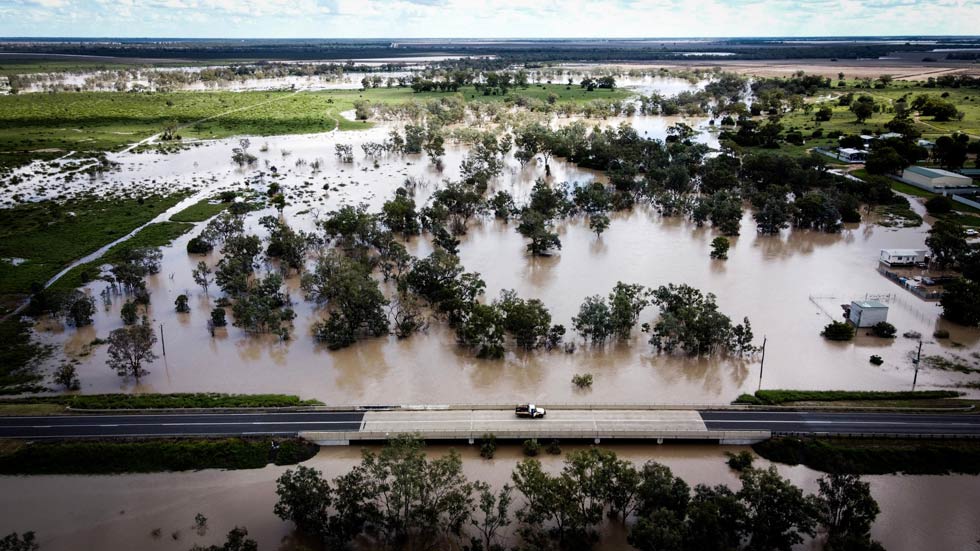-
Url copied to clipboard.
According to the Bureau of Meteorology’s ENSO Outlook, the La Niña alert remains active. This means that the chance of La Niña forming in the coming months is at least 70%.
With cooling expected to continue in the Pacific Ocean, four of seven models suggest La Niña could return by early-to-mid spring.
A likelihood of 70% is around three times above average recordings.
The underlying factor to this is climate change. And whilst the sceptics of a warming planet remain vocal, bodies like the World Economic Forum list climate change as five of their top ten most disruptive events in the next ten years.
The last decade shows us a clear trend of increased natural disasters and events that are causing catastrophic economic impact.
Insurance premiums will only rise
The Insurance Council of Australia is calling for the new Australian Government to boost investment in stronger homes and local infrastructure to make communities more resilient in the face of worsening extreme weather, and this investment must be matched by the states and territories.
They add that the Australian Government investment in these measures needs to lift from $100 million to at least $200 million a year, or $1 billion over the next five years.
This industry knows implicitly that natural disasters are going to become more expensive to insure against.
In March 2022, The Guardian posted a story on Adam Bailey, an antiques shop owner from Lismore, Australia who was quoted a $70,000 per year premium to cover his premises. Unable to afford this, the year’s “higher than usual” floods have left him with a half million dollars’ worth of repairs.
Admittedly, Bailey is an underwriter’s bull in a China shop demographic, but this story reminds us that premiums are rapidly increasing and so organisations should rapidly prepare to help keep them down.
But how can you fight the operational impacts of global climate change from the premise of your own office?
It starts by demonstrating your ability to plan, prepare, respond and recover from a disruptive event.
Organisations should be reviewing business continuity plans alongside insurance premium’s terms to get greater confidence and understanding on the solutions in place to reduce recovery costs.
Is the negotiation of premiums being supported by your existing comprehensive business continuity plan?
Understand your work from home risks
A hybrid, work-from-home landscape is part of the post-covid “new-norm”. But it’s not all smooth sailing for organisations keen to provide flexible arrangements for their staff.
When a natural disaster occurs, it can wipe out the ability for staff to work remotely. It can disrupt or remove communications.
This can be a worse scenario based on the responsibilities of the individual affected by the natural disaster (for example, the leader of your crisis response team).
That said, there is another side to the coin.
The capability to work from home also presents a real opportunity for organisations to provide flexibility to their staff who may want to be at home during severe weather to look after their property and family.
It can also disperse the risk of a business disruption due to power or internet outage, or office building damage during a storm. This can help keep your team running even if your office isn’t.
Natural disasters up. Inflation up.
As we’ve seen with previous floods over the last twelve months, supply chain and fresh produce seem to get the brunt of the impacts.
A supply shock off the back of a natural disaster disrupts the stock market and in turn contributes to inflation. We can’t necessarily combat this, but as private or public trading entities, we can (and should) review the supply chain risks in detail.
Two questions to start by answering is:
- Does your business continuity and/or response plan involve external outsourced service providers (supply chain in this case).
- When was the last time you trained out a response via a simulation exercise involving your external suppliers / outsourced service providers within your supply chain?
Our five tips
With all this in mind, below is a summary of our top five tips on preparing for the arrival of La Niña.
- Understand your flood risk.
- Are your physical locations susceptible to flooding?
- Check your insurance policy.
- Many organisations find themselves without financial capacity to recover because of fine print in their policies that means their claim is rejected.
- Or they do not utilise their comprehensive BCP’s to reduce premiums and risk to the underwriter.
- Consider where you would relocate.
- Will this new premises keep up with day-to-day operations? Is it suitable for your whole team? How long would you be able to stay? Is it also at risk to natural disasters?
- How will floods (or weather events) affect your staff’s ability to come to work or work in general?
- This is even more critical to smaller organisations.
- Act early.
- Don’t wait until La Niña is here, review this now.
Reach out to the RiskLogic consulting team today to learn how we can help you get through an event like this.






